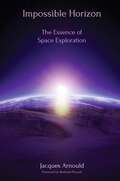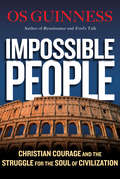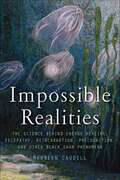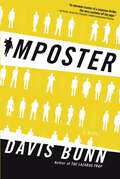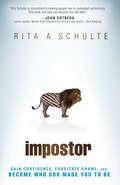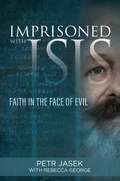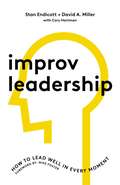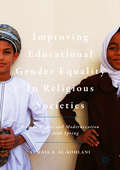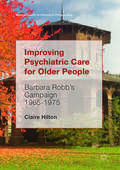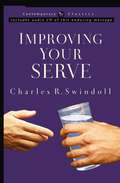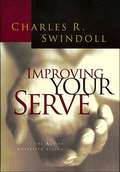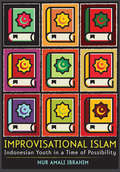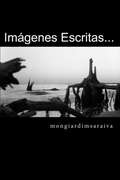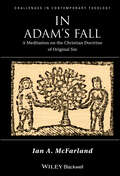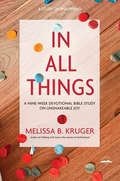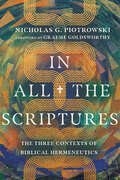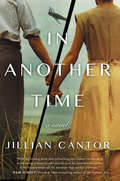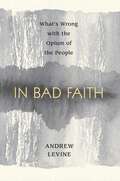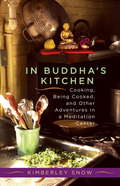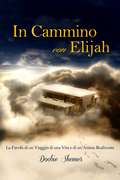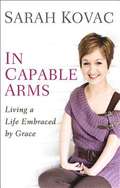- Table View
- List View
Impossible Horizon: The Essence of Space Exploration
by Jacques ArnouldFor a long time what we now know as space was inaccessible to humans, not because it was at a height which was unattainable without the least astronautical technology or principles, but because of the cosmic and dualistic representation of reality. Humans were relegated to the centre, to a sort of ecesspiti of imperfection, alteration, incompleteness and finally death. Around them were crystal spheres which held the planets and starsoimmutable, eternal and perfectoa domain which was completely off-limits to humans, unless they had discarded their carnal envelope, either through a mystical experience or after death. It took a revolution, the Copernican Revolution, to shatter the celestial spheres and make them no longer forbidden territory. Galileo was one of the first revolutionaries: through his astronomical observations, he showed the Earth and the Sky were in fact made of the same fabric, the same material, and therefore belonged to the same world. Then followed Kepler and others. Centuries passed, and human conquered the air, and then space. Their feet touched the surface of the Moon and their wheels the surface of Mars. The Earth and the entire universe somehow became flat again with no folds, no curves, at least in appearance, to hide any dark corners. The horizon once again retreated out of reach taking with it perhaps the last dreams of exploration. The human imagination does not like horizons which are too flat, too clear; humanity needs to meet resistance, brakes, constraints to stop them in their tracks, to cross them and lead them, to new unknown territories. An impossible Horizon, writes Jacques Arnould in this work, but a horizon without which our adventures, our explorations would lose their savor and especially their meaning. We will then understand that even if the goal is never fully achieved, it is the quest that enriches us.i Bertrand Piccard. (Balloonist, aviator and psychiatrist, Bertrand Piccard is the first to complete a non-stop balloon flight around the globe, in a balloon named Breitling Orbiter 3. With Andre Borschberg, he is the initiator, chairman, and pilot of Solar Impulse, the first successful round-the-world solar powered flight)
Impossible People: Christian Courage and the Struggle for the Soul of Civilization
by Os GuinnessECPA 2017 Christian Book Award Finalist The church in the West is at a critical moment. While the gospel is exploding throughout the global south, Western civilization faces militant assaults from aggressive secularism and radical Islam. Will the church resist the seductive shaping power of advanced modernity? More than ever, Christians must resist the negative cultural forces of our day with fortitude and winsomeness. What is needed is followers of Christ who are willing to face reality without flinching and respond with a faithfulness that is unwavering. Os Guinness describes these Christians as "impossible people," those who have "hearts that can melt with compassion, but with faces like flint and backbones of steel who are unmanipulable, unbribable, undeterrable and unclubbable, without ever losing the gentleness, the mercy, the grace and the compassion of our Lord." Few accounts of the challenge of today are more realistic, and few calls to Christian courage are more timely, resolute—and hopeful. Guinness argues that we must engage secularism and atheism in new ways, confronting competing ideas with discernment and fresh articulation of the faith. Christians are called to be impossible people, full of courage and mercy in challenging times.
Impossible Realities: The Science Behind Energy Healing, Telepathy, Reincarnation, Precognition, and Other Black Swan Phenomena
by Maureen CaudillImpossible Realities is one of the first books to examine the science behind psychic and paranormal activity. A former Defense Department expert on artificial intelligence, Maureen Caudill provides evidence for a wide range of paranormal phenomena.Impossible Realities presents a wealth of anecdotal and empirical evidence to prove the existence (and power) of:psychokinesis (most famously spoon bending)remote viewingenergy healingtelepathy, animal telepathyprecognitionsurvival after deathreincarnationCaudill presents the strongest case yet for bringing paranormal phenomena from the margins into the realm of the normal and credible. This is a book both for true believers and skeptics alike.
Imposter
by Davis BunnMatt Kelly's knack for concealing his identity is his greatest asset as a federal agent. But when an assignment gets personal, discovering who he really is may prove to be the toughest mission of all.
Impostor: Gain Confidence, Eradicate Shame, and Become Who God Made You to Be
by Rita A SchulteThe courage to be yourself Are you tired of pretending? Of spending so much time and energy trying to live up to the expectations of others? Of being afraid to show people the real you? Do you sometimes feel like an impostor in your own life? So many women today are living the &“try hard&” life. Trying to be perfect. Trying to maintain control. Trying to be what others want them to be. In her counseling practice Rita Schulte meets women in this place almost daily. In Impostor she combines medical research with moving stories from her own life and practice to help you uncover the lies, distortions, and other contributing factors that set up the imposter self. You will learn: · How five core needs drive our behavior · Why we pretend · Why we fear being known · How to give up the &“try hard&” life once and for all Most importantly you&’ll discover what it takes to distinguish the impostor&’s identity from the one that is intrinsically yours in Christ. Healing will come as you remove the mask and begin the journey of self-discovery.
Impressions of Paul
by Paul MobleyThis book studies Paul's life from birth as Saul of Tarsus, with a little known about his parents, how he became a tent maker, later his advanced schooling at the feet of Gamaliel, and as an adult his persecution of Christians. His life changed dramatically on the road to Damascus when Christ appeared to him. Then, fully convinced he become a Christian and worked with the same vigor and energy becoming one of the well known apostles, and writing much of the New Testament. Now he was the enemy and suffered for it. His study reveals life at the time, and his in particular as a Christian.
Imprisoned with ISIS: Faith in the Face of Evil
by Petr JasekAs a child, Petr Jasek (Peter Yash-eck) watched Soviet tanks roll through the streets of his village in Czechoslovakia, taking the country by force and subjecting it to decades of Communist oppression. Petr grew up in the underground church and benefitted from financial help and Bibles smuggled in to his family. As an adult living in the free Czech Republic, Petr chose to begin serving persecuted Christians—especially in Islamist hotspots in Africa and the Middle East. In 2015, he was arrested in Sudan, convicted as an enemy of the state, and sentenced to life in prison, where he was forced to share a group cell with ISIS terrorists. The true story of what God did in and through Petr has already inspired tens of thousands around the world. Now, for the first time, Petr tells the whole story.
Improbable Magic for Cynical Witches
by Kate ScelsaA witchy, atmospheric lesbian contemporary romance set in Salem—from the acclaimed author of Fans of the Impossible Life. Perfect for fans of Nina LaCour and Becky Albertalli.Seventeen-year-old Eleanor is the last person in Salem to believe in witchcraft—or think that her life could be transformed by mysterious forces. After losing her best friend and first love, Chloe, Eleanor has spent the past year in a haze, vowing to stay away from anything resembling romance.But when a handwritten guide to tarot arrives in the mail at the witchy souvenir store where Eleanor works, it seems to bring with it the message that magic is about to enter her life. Cynical Eleanor is quick to dismiss this promise, until real-life witch Pix shows up with an unusual invitation. Inspired by the magic and mystery of the tarot, Eleanor decides to open herself up to Pix and her coven of witches, and even to the possibility of a new romance.But Eleanor’s complicated history continues to haunt her. She will have to reckon with the old ghosts that threaten to destroy everything, even her chance at new love.Improbable Magic for Cynical Witches is a romantic coming-of-age about learning to make peace with the past in order to accept the beauty of the present.
Improv Leadership: How to Lead Well in Every Moment
by David Miller Stan EndicottYou already know that there's no script for effective leadership... That's why Improv Leadership reveals five skills that will help you unleash your own leadership potential on every unexpected challenge and status quo.Anyone can read books and apply lessons, but only the best can develop what they know to bring out the best in any person or circumstance. These natural leaders understand the key principles of connecting, coaching, and communicating and use these ideas to build strong teams.In Improv Leadership, Stan Endicott and David Miller share five leadership competencies that all great, improvisational leaders have:Story Mining--how to uncover a person's story and let it shape the way you lead themPrecision Praising--how to craft praise to inspire, motivate, and even course-correct your teamMetaphor Cementing--how to create concrete illustrations to "cement" an idea in someone's mindLobbing Forward--how to challenge people to look beyond today to what might be in the futureGoing North--how to use indirect influence to redirect a person's perspectiveIMPROV leaders apply these five competencies to initiate powerful conversations, create memorable moments with forward momentum, and craft personal coaching strategies that help people, and teams, grow.The five competencies of IMPROV Leadership are not rigid steps to follow. They are fluid and can be applied to any industry of field. You can't predict every challenge you'll face. There's no playbook that covers every decision. But you can cultivate teams of people who love their work (and each other) and who perform at a high level. And you can lead well in any situation.
Improving Educational Gender Equality in Religious Societies: Human Rights And Modernization Pre-arab Spring
by Sumaia A. Al-KohlaniIn this book, Al-Kohlani examines fifty-five Muslim and non-Muslim countries from 1960 to 2010 in response to “religious theory” that associates certain religions with gender inequality and “modernization theory” which downplays the role of religion on gender inequity and associates gender inequality with socioeconomic factors. The author explores both schools of thought and posits that, on average, Muslim countries have lower educational equality in comparison to non-Muslim countries with less religious constitution. An interdisciplinary study drawn from the fields of world politics, public policy in education, and political religion, this book responds not only to debates within academia, but also to larger debates in society about the role of religion in the state, the specific challenges of the relationship of Islam and the public policies, and the relationship between constitution and gender equality.
Improving Psychiatric Care for Older People
by Claire HiltonThis book is open access under a CC BY 4. 0 license. This book tells the story of Barbara Robb and her pressure group, Aid for the Elderly in Government Institutions (AEGIS). In 1965, Barbara visited 73-year-old Amy Gibbs in a dilapidated and overcrowded National Health Service psychiatric hospital back-ward. She was so appalled by the low standards that she set out to make improvements. Barbara's book Sans Everything: A case to answer was publicly discredited by a complacent and self-righteous Ministry of Health. However, inspired by her work, staff in other hospitals 'whistle-blew' about events they witnessed, which corroborated her allegations. Barbara influenced government policy, to improve psychiatric care and health service complaints procedures, and to establish a hospitals' inspectorate and ombudsman. The book will appeal to campaigners, health and social care staff and others working with older people, and those with an interest in policy development in England, the 1960s, women's history and the history of psychiatry and nursing.
Improving Your Performance
by Mark T. BarclayAs you read this book you will be able to see a little of both sides of the sheepfold. Prayerfully this will help you to work and flow together in the same mind and spirit. Enjoy the book, and please allow the Holy Spirit to engrave His truths upon your heart.
Improving Your Serve
by Charles R. SwindollIn this classic volume, Charles Swindoll uniquely shows the important aspects of authentic servanthood, such as: What it takes to serve unselfishly Why a servant has such a powerful influence What challenges and rewards a servant can expect He offers clear guidelines on developing a servant's heart and challenges you to realize the rich rewards promised in a life of authentic Christian servanthood.
Improving Your Serve: The Art of Unselfish Living
by Charles R. SwindollIn this classic volume, Charles Swindoll uniquely shows the important aspects of authentic servant-hood, such as: What it takes to serve unselfishly; why a servant has such a powerful influence; and what challenges and rewards a servant can expect. He offers clear guidelines on developing a servant's heart and challenges you to realize the rich rewards promised in a life of authentic Christian servant-hood. As a Contemporary Classic, this edition includes a CD of the original message by Swindoll that later developed into this inspiring book.
Improvisational Islam: Indonesian Youth in a Time of Possibility
by Nur Amali IbrahimImprovisational Islam is about novel and unexpected ways of being Muslim, where religious dispositions are achieved through techniques that have little or no precedent in classical Islamic texts or concepts. Nur Amali Ibrahim foregrounds two distinct autodidactic university student organizations, each trying to envision alternative ways of being Muslim independent from established religious and political authorities. One group draws from methods originating from the business world, like accounting, auditing, and self-help, to promote a puritanical understanding of the religion and spearhead Indonesia’s spiritual rebirth. A second group reads Islamic scriptures alongside the western human sciences. Both groups, he argues, show a great degree of improvisation and creativity in their interpretations of Islam.These experimental forms of religious improvisations and practices have developed in a specific Indonesian political context that has evolved after the deposal of President Suharto’s authoritarian New Order regime in 1998. At the same time, Improvisational Islam suggests that the Indonesian case study brings into sharper relief processes that are happening in ordinary Muslim life everywhere. To be a practitioner of their religion, Muslims draw on and are inspired by not only their holy scriptures, but also the non-traditional ideas and practices that circulate in their society, which importantly include those originating in the West. In the contemporary political discourse where Muslims are often portrayed as uncompromising and adversarial to the West and where bans and walls are deemed necessary to keep them out, this story about flexible and creative Muslims is an important one to tell.
Imágenes Escritas…
by Antonio Carlos Mongiardim Gomes Saraiva Elisa Aguilera CormenzanaSobre el autor: Portugués, nacido en Lisboa en el año de 1957. Vive en Brasil desde 1995. Profesor y traductor de lengua Francesa. Artista plástico y Escritor. Publicaciones: Entre el cielo y la tierra (Poesías, crónicas y pensamientos) Una dieta cuántica (Ensayo) Site: http://meujardimpoetico.blogspot.com.br/ Contacto: mongiardimsaraiva@gmail.com Logotipo:
In Adam's Fall: A Meditation on the Christian Doctrine of Original Sin (Challenges in Contemporary Theology #29)
by Ian A. McFarlandThis engaging and scholarly book offers refreshingly original insights into the contemporary relevance of the Christian doctrine of original sin – one that has inspired fierce debate for the last two millennia. Challenges the many prevailing opinions about the Christian doctrine of original sin, arguing that it is not only theological defensible, but stimulating and productive for a life of faith Shows how it is possible to affirm the universality of sin without losing sight of the distinct ways in which individuals both participate in and suffer the consequences of sinful behavior Balances historic and contemporary criticism with original theological arguments; combining the substance of a traditional Augustinian doctrine of sin with the pastoral and social concerns of contemporary contextual theologies Provides a depth and range of engagement with contemporary criticism of traditional doctrine that is lacking in other recent treatments of the topic
In All Things: A Nine-Week Devotional Bible Study on Unshakeable Joy
by Melissa B. KrugerThis accessible and practical Bible study of the book of Philippians invites you to discover a joy and contentment that will carry you through every circumstance of life.With warm teaching and perspective-shifting insights, Bible teacher Melissa Kruger walks you through the power-packed words of the apostle Paul to believers in the early church to discover what he knew about the secret to unshakeable peace--and how his insights can help any woman discover a secure and satisfying contentment no matter what life may bring. With the Scripture passages printed right in the book for handy reference, this is an ideal resource for busy women of any life stage who want to deepen their spiritual life and increase their daily joy.
In All the Scriptures: The Three Contexts of Biblical Hermeneutics
by Nicholas G. PiotrowskiNo one reads the Bible without some interpretive principles, or hermeneutics, in place. The question every student of Scripture needs to ask, then, is this: Are your interpretive principles and methods legitimate and ethical? In this accessible introduction to biblical hermeneutics, Nicholas G. Piotrowski presents an approach that explores three layers of context: literary, historical, and christological. Because no text exists in the abstract, interpreters must seek to understand a passage's ecology: the flow and argument of the entire biblical book, the world of the original author and audience, and the movement of redemptive history that culminates in the person and work of Jesus Christ. Careful interpretation is both a science and an art, Piotrowski argues, and it has powerful implications for what we believe and how we apply God's Word. Featuring numerous examples, further reading lists, and a glossary, In All the Scriptures equips students, pastors, and thoughtful readers to build a solid foundation for interpreting the Bible.
In Another Time: A Novel
by Jillian CantorA sweeping historical novel that spans Germany, England, and the United States and follows a young couple torn apart by circumstance leading up to World War II—and the family secret that may prove to be the means for survival.Love brought them together. But only time can save them…1931, Germany. Bookshop owner Max Beissinger meets Hanna Ginsberg, a budding concert violinist, and immediately he feels a powerful chemistry between them. It isn’t long before they fall in love and begin making plans for the future. As their love affair unfolds over the next five years, the climate drastically changes in Germany as Hitler comes to power. Their love is tested with the new landscape and the realities of war, not the least of which is that Hanna is Jewish and Max is not. But unbeknownst to Hanna is the fact that Max has a secret, which causes him to leave for months at a time—a secret that Max is convinced will help him save Hanna if Germany becomes too dangerous for her because of her religion. In 1946, Hanna Ginsberg awakens in a field outside of Berlin. Disoriented and afraid, she has no memory of the past ten years and no idea what has happened to Max. With no information as to Max’s whereabouts—or if he is even still alive—she decides to move to London to live with her sister while she gets her bearings. Even without an orchestra to play in, she throws herself completely into her music to keep alive her lifelong dream of becoming a concert violinist. But the music also serves as a balm to heal her deeply wounded heart and she eventually gets the opening she long hoped for. Even so, as the days, months, and years pass, taking her from London to Paris to Vienna to America, she continues to be haunted by her forgotten past, and the fate of the only man she has ever loved and cannot forget.Told in alternating viewpoints—Max in the years leading up to WWII, and Hanna in the ten years after—In Another Time is a beautiful novel about love and survival, passion and music, across time and continents.
In Bad Faith: What's Wrong With The Opium Of The People
by Andrew LevineFor readers interested in political theory and political activism, as well as anyone puzzled by the persistence of theistic conviction in the modern world, this critique of religious belief provides insightful analysis. In light of rational standards for belief acceptance that are universally acknowledged in enlightened circles, theistic convictions are deeply problematic. Thus it is not surprising that some of the most important heirs of the Enlightenment tradition-Ludwig Feuerbach, Emile Durkheim, Sigmund Freud, and Friedrich Nietzsche-wondered, implicitly, why belief in God persists and even flourishes among those who should and in some sense do know better. This book provides fresh insight into the work of those thinkers by reflecting on the explanations they proffered and on their explanatory strategies. For all their many differences, their respective explanations share a common core and are driven by a similar (largely unelaborated) normative commitment. On Levine's account, believers today believe in bad faith-in other words, they evince a fundamental intellectual dishonesty. If only for this reason, they merit reproach, even in the comparatively rare instances when "faith perspectives" do more good than harm. From this standpoint, the author reflects on the liberal turn in the so-called Abrahamic religions (Judaism, Christianity, and Islam) and depicts liberal religion as a vehicle of exit for those who implicitly acknowledge the untenability of the beliefs they profess, yet are unable or unwilling to face this reality squarely. He argues that liberal religion is therefore a transitory phenomenon, albeit one that has survived for a long time and that is not about to expire soon. Levine then faults the religious Left on this account, arguing that even in those historically rare conditions where bad faith motivates welcome political engagement, it is nevertheless undermined by its deep inauthenticity.
In Between (A Katie Parker Production act I)
by Jenny B. JonesSoon after moving to a small Texas town, fifteen-year-old Katie Parker's rebelliousness complicates her life at home and school, but when she is accused of vandalism, she finds hope through a new friendship, involvement in a play, and her foster family's faith in God and her.
In Buddha's Kitchen: Cooking, Being Cooked, and Other Adventures in a Meditation Center
by Kimberley SnowKimberley Snow offers an outrageously funny and honest account of her adventures as head cook at a Tibetan Buddhist retreat center. With her earthy sensibility and sharp sense of humor, the author shows this world in a light devoid of preciousness--while expressing with heart the integrity of the spiritual work being undertaken. We come away from our visit to this exotic realm having found it both extraordinary and surprisingly familiar. The neuroses, obsessions, and petty concerns exposed by Snow--both in herself and her fellow staff members--prove to be grist for the mill for discovering the grace inherent in life just as it is.
In Cammino con Elijah, La favola di un viaggio di una vita e la realizzazione di un’Anima.
by Doobie Shemer Annalisa PuccinelliIl quarantacinquenne Doobi Shemer ha tutto: una famiglia amorevole, due auto, un cane e due gatti. Vive nella sua casa in periferia, detiene una posizione di dirigente aziendale ed è finanziariamente stabile. Ha una vita agiata e prevedibile. Tuttavia manca qualcosa; qualcosa che non sa descrivere o indicare. Un’ irrequieta sensazione di essere incompleto domina la sua intera esistenza. Ciononostante, Doobie impara presto che la vita per lui non è stata concepita come normale o ordinaria. Un luminoso giorno d’inverno incontra Elijah, il suo maestro spirituale, in un laboratorio di sciamanesimo a New Orleans, il corso della vita di Doobie inizia a cambiare. Un germoglio mistico si risveglia nel suo essere e comincia a crescere. Crea fame di spiritualità che lo porta a un enorme passaggio dall’incompletezza al senso di appagamento e beatitudine. In cammino con Elijah: La favola di un viaggio di vita e di un’anima realizzata ci ispira ad esplorare senza timore il nostro percorso spirituale e a percorrere sentieri mai intrapresi prima. “Così Vero, ogni parola ~ Grazie. Tranquillizzanti, le tue parole calmano la mia anima ~ Namaste.” ~ D.C. “Grande insegnamento, so che è vero, l’ho vissuto. Grazie.” ~ K.B. (12 aprile 2014) “Grazie … leggo e penso come le tue parole … Senti il calore e la felicità nel mio cuore Amore n Namaste caro Doobie” ~ P.T. L’incredibile viaggio della vita di Doobie Shemer iniziò nel suo luogo di nascita, il Kibbutz Givat-Brener, in Israele. Desideroso di esplorare i significati della vita, ha viaggiato molto e ha sperimentato diverse culture – l’India mistica, la bellissima Cipro – prima di trasferirsi in California dove ora abita ed è sciamano praticante, in viaggio per gli altri.
In Capable Arms: Living a Life Embraced by Grace
by Sarah KovacSarah Kovac was born with Arthrogryposis Multiplex Congenita (AMC), a rare congenital birth defect that left her with arms that she could barely use. Growing up, she was the only one in her class with a disability, setting her apart as “different” and unpopular. Realizing her unique place in the world, Sarah began adapting, working to her strengths, and eventually learned to use her feet to do such activities as changing her son's diapers, making dinner, putting on makeup, and even typing on the computer--even as she grew in spiritual and emotional maturity and independence in exceptional ways. Picked up by national news network CNN, Sarah’s story went viral and she was suddenly presented with a platform from which to share her love for God. In Capable Arms brings readers on Sarah’s journey, crying with her through intense frustration and the desire to be perfect, cheering her through physical training and pain, and admiring her eventual spiritual surrender as she let go of her insecurities and let God use her . . . even her crippled arms. Sarah brings readers face to face with their own struggles, challenges them with questions about self-worth and fear, then offers guidance, wisdom, and inspiration for finding hope—and healing—in the arms of the One who loves them no matter what.
